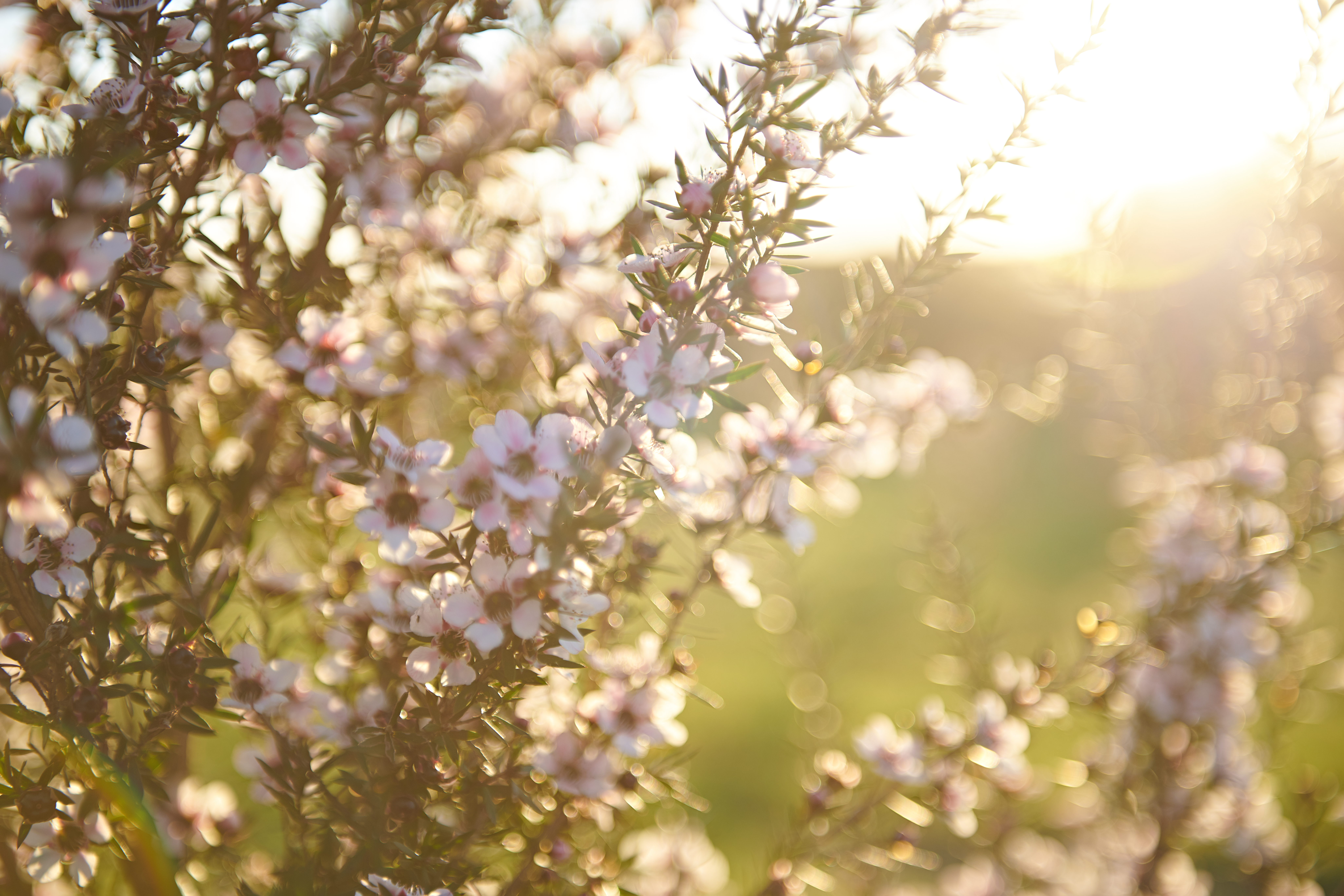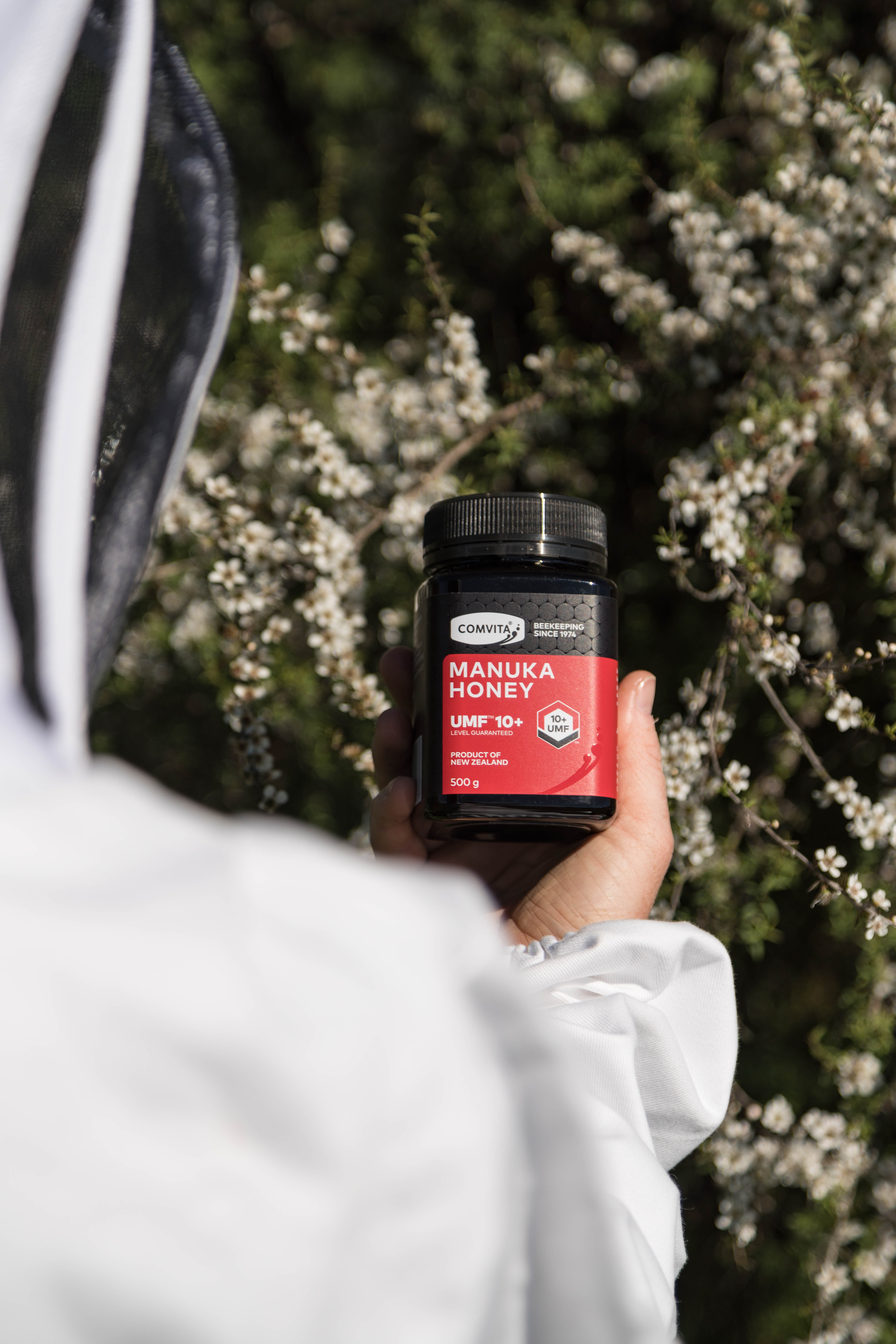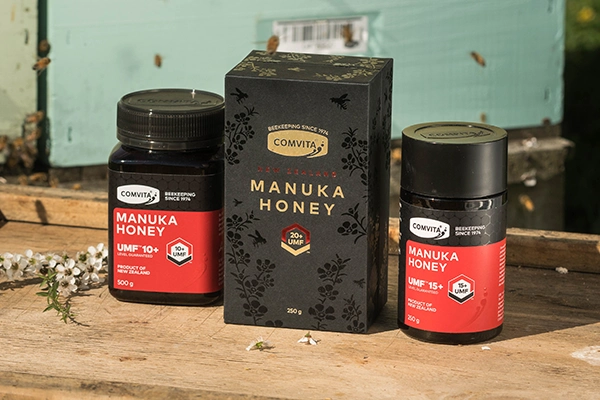
Order Confirmed
We’re sorry, the page you requested could not be found.
Authentic New Zealand Mānuka Honey is amazing stuff. Rich in nutrients, rich in taste and prized for its health-supporting properties, this ‘liquid gold’ is highly sought after around the world.
But how can you be sure whether it’s the genuine article, or not? These days, it can be tricky trying to decipher a myriad of scientific-sounding terms and numbers. Some brands have created their own grading systems, while others are independently measured using the ‘MGO’ or UMF™ quality mark – it sure is confusing!
On top of that, some honey producers claim their honey is authentic, even though it hasn’t been tested or verified – and there are a number of counterfeit products available too. It’s a problem that can leave a sour taste in the mouth for those seeking this sweet gift from nature.
Read on to learn the key methods used for testing the authenticity of genuine Mānuka Honey, and 7 ways to be sure you’re always getting the real deal.
Mānuka Honey is a unique and very special honey that’s produced from the characteristic nectar from the sweet-smelling flower of New Zealand’s native Mānuka tree.
Containing amino acids, vitamins, antioxidants, minerals, proteins, carbohydrates, and bioactive compounds, Mānuka Honey is an amazing product that's at the forefront of natural health science. No other honey has the volume or complexity of natural components as New Zealand Mānuka Honey.
Thick and delicious, with a characteristic dark cream to dark brown colour, Mānuka Honey has long been sought after as an exceptional honey with a distinct, complex flavour and rich aroma that’s very different from ordinary honey. 
New Zealand’s native Mānuka trees only bloom for 2 to 6 weeks per year – no wonder authentic Mānuka Honey is so precious!
There are seven ways to know for sure that your jar of Mānuka Honey is authentic, no matter where you buy it in the world (spoiler alert, Comvita Mānuka Honey ticks all of these boxes!). In a nutshell, they are:
1. It’s from New Zealand
2. It’s made from Mānuka flowers
3. It gets the MPI tick (Ministry of Primary Industries)
4. It contains four unique compounds
5. It carries the UMFTM quality mark
6. It’s independently verified and certified
7. It’s produced by a reputable, well established brand
Want to know more? Here are more details about these 7 points of authenticity and why they matter...
The native Mānuka tree’s roots run deep in New Zealand’s history and culture. From food to traditional medicine, Māori found many uses for the leaves, bark and gum of the Mānuka tree.
In fact, Māori consider the Mānuka tree and a taonga (treasure) and that they are the kaitiaki (guardians, not just of the tree, but also the knowledge and traditions associated with it. To Māori, the use of the name Mānuka means that this precious treasure is being honoured and protected.
As such, New Zealand is the only country that can legitimately use the word ‘Mānuka’ with a macron above the ‘a’ (the authentic Māori spelling). It’s our belief that no other country has this connection to the Mānuka tree and the name Mānuka should only be used when these trees are grown in New Zealand.
For honey to be legally labelled as ‘Mānuka Honey’, it must be predominantly collected from the nectar of New Zealand Mānuka flowers (Leptospermum scoparium)1. Authentic Mānuka Honey is a ‘monofloral’ honey that contains unique and beneficial compounds, which are lab tested to determine its purity and potency.
Mānuka Honey can only be produced in areas abundant with native Mānuka blossoms, which is why our hives are located in some of the most remote, untouched parts of New Zealand – with some areas only accessible by helicopter or hike-in.
What’s more, Mānuka trees only bloom for a very short 2 to 6 weeks a year, which is why every drop of authentic Mānuka Honey is so rare – and so highly prized. 
Note the macron above the ‘a’ on Comvita Mānuka Honey – a sign that it’s authentic, independently tested Mānuka Honey from New Zealand.
The Mānuka Honey industry is regulated by New Zealand’s Ministry for Primary Industries (MPI). This means that that all honey exported from New Zealand under the name ‘Mānuka Honey’ undergoes stringent testing, ensuring that it’s unadulterated and true to label – giving consumers confidence that they are getting the real thing.
MPI enforces a Scientific Regulatory Definition for exported Mānuka Honey based on chemical fingerprinting and pollen DNA marker analysis. 1 This definition requires minimum amounts of these specific phenolic compounds to be present in the honey:
• 2-methoxybenzoic acid
• 2’-methoxyacetophenone
• 3-phenyllactic acid
• 4-hydroxyphenyllactic acid
• along with a Mānuka pollen DNA marker.
These compounds are produced naturally in the nectar of Mānuka flowers and therefore naturally occur in Mānuka Honey. 2 All of Comvita’s exported and domestic Mānuka Honey meets these stringent MPI standards. This means that, no matter where you buy our products, you can be confident that you’re buying authentic Mānuka Honey from New Zealand .
The four important compounds that are a measure of the quality and authenticity of Mānuka Honey.
As well as the compounds measured by MPI, Comvita scientists, and others, have pioneered the discovery of four other unique compounds, which are also used to authenticate Mānuka Honey’s purity and potency.
The UMF™ (Unique Mānuka Factor) number represents these four unique signature compounds (more about that later in this article):
MGO is the compound that’s principally responsible for Mānuka Honey's unique non-peroxide antibacterial activity (which is not present in other types of honey). There have been cases of adulteration where synthetically made MGO has been added into honey to make ‘fake’ Manuka Honey. In other words, measuring MGO alone is not a guarantee of the purity and quality of Mānuka Honey.(3,4,5)
DHA is a natural plant compound found in the nectar of Mānuka flowers. DHA converts to MGO over time in Mānuka Honey as it matures.
Leptosperin is a unique natural plant compound found only in Mānuka Honey. It’s extremely difficult to make synthetically and is not commercially available. As this compound cannot be artificially added to Mānuka Honey, it is an excellent marker for authenticity.( 6,7,8)
Discovered by Comvita scientists, this is a unique natural plant compound found only in Mānuka Honey. It’s extremely difficult to make synthetically and is not commercially available. Like Leptosperin, this compound can’t be artificially added to Mānuka Honey, so it’s another excellent marker for authenticity.(9,10,11)
Comvita is the only honey producer that tests for Lepteridine™ 3,6,7-Trimethyllumazine levels in Mānuka Honey – another sign that our honey is genuine, high quality Mānuka Honey.
Look for the UMFᵀᴹ quality mark on your jar of Mānuka Honey – it’s a sure sign of authenticity.
Only New Zealand Mānuka Honey brands licensed with the UMFHA can carry the Unique Mānuka Factor (UMF™) quality mark, the most comprehensive, independently certified and internationally recognized quality assurance system available. Known as the ‘gold standard’ in quality control, it provides independent assurance of Mānuka Honey’s potency, authenticity, purity, shelf life and freshness.
UMF™ certification is the only quality and rating system that independently certifies the presence and quality of the four key natural components that make New Zealand Mānuka Honey unique.
To carry the UMF™ quality mark, genuine UMF™ Mānuka Honey must comply with all five of the following criteria:
1. UMF™ is clearly stated on the front label
2. It is packed into jars and labelled in New Zealand
3. It is from a New Zealand company licensed by UMFHA to use the name UMF™
4. It has the UMF™ licensee's name on the front label
5. It has a rating of UMF™ 5+ or more
Remember, not all Mānuka Honey is UMF™ rated – only the brands which have been independently tested and verified by UMFHA – including New Zealand’s leading honey brand, Comvita Mānuka Honey .
As the pioneers of authentic Mānuka Honey and with nearly 50 years of beekeeping science, knowledge and care, there's simply no other honey that’s as tested and trusted as Comvita honey.
Comvita established New Zealand’s only internationally accredited honey laboratories (our Nature Labs), and we rigorously test our honey with more than 34 separate tests to ensure its purity and efficacy.
With 23 independent audits and certifications and 45 patents globally, Comvita continues to deliver products of the highest quality, purity and potency to customers around the world.
Our New Zealand Mānuka Honey is also sustainably sourced, Non-GMO Project Verified and Certified UMF Raw Mānuka Honey. 
Healing, protecting and restoring natural ecosystems and improving biodiversity is at the heart of our company.
If you’re still not sure which Mānuka Honey brand to choose, look for a large, reputable and enduring brand that has not only been around for a long time, but is also actively working to protect our bees and our planet in the future.
Comvita is the home of real Mānuka Honey. We’ve been nurturing bees and harvesting honey since 1974 – and our founder Claude Stratford had already been beekeeping for over 50 years by then.
Our sustainable practices honour the natural state of Mānuka Honey, and ensure this precious and rare nectar is available for generations to come. And our harmony plan ensures we leave the world a better place, for bees, trees, people and our environment.
We’re not only about nature, we’re also about science. As mentioned above, our Mānuka Honey products are UMF™ certified, which means they are tested both by Comvita and by independent laboratories to meet strict quality standards for Mānuka Honey.
Simply put, our honey is as pure, natural and authentic as Mānuka Honey can be. Enjoy every drop of our Mānuka Honey knowing that it’s the real deal, from our hives to your hands.
The Mānuka Honey industry is regulated by the New Zealand’s Government’s Ministry for Primary Industries (MPI) as well as the UMFHA (Unique Mānuka Factor Honey Association). All honey exported under the name ‘Mānuka Honey’ undergoes rigorous testing, ensuring that it’s authentic, unadulterated and contains all of the unique compounds found in genuine Mānuka Honey.
As New Zealand’s leading Mānuka Honey producer, Comvita also undertakes more than 34 separate tests ensure our honey’s quality, purity and efficacy. So our Mānuka Honey is arguably the most tested and certified honey in the world!
The simplest way to ensure the Mānuka Honey you’re buying is authentic is to look for the UMF™ (Unique Mānuka Factor ) quality mark on the label. This is most comprehensive, independently certified and internationally recognized quality assurance system available.
The UMFHA (UMF Honey Association) has been at the forefront of almost three decades of world-leading research to understand the benefits and quality of Mānuka Honey. They have identified 2,300+ natural compounds in New Zealand Mānuka Honey that contribute to its unique taste, texture and its support of health and wellness – and ensure its authenticity.
New Zealand’s Ministry for Primary Industries (MPI) regulates the Mānuka Honey industry. This means that that all honey exported under the name ‘Mānuka Honey’ undergoes stringent testing, ensuring that it’s unadulterated and true to label.
Licensed New Zealand Mānuka Honey brands also carry the UMF™ trademark, the most comprehensive, independently certified and internationally recognized quality assurance system available. Known as the ‘gold standard’ in quality control, it provides independent assurance of Mānuka Honey’s potency, authenticity, purity, shelf life and freshness. You can read more about the UMF™ quality mark here .
Note: The contents of this blog are for educational purposes and are not intended to offer personal medical advice. You should seek the advice of your physician or other qualified health provider if you have any questions regarding a medical condition. Never disregard professional medical advice or delay seeking it because of something you have read on this website.
References:
1. Ministry for Primary Industries. Mānuka honey science definition. Retrieved from https://www.mpi.govt.nz/growing-and-harvesting/honey-and-bees/Mānuka-honey (2017).
2. Smallfield, B. M., Joyce, N. I., & van Klink, J. W. Developmental and compositional changes in Leptospermum scoparium nectar and their relevance to Mānuka honey bioactives and markers. 2018. New Zealand Journal of Botany, 56(2), 183-197.
3. Mavric E, Wittmann S, Barth G, Henle T. Identification and quantification of methylglyoxal as the dominant antibacterial constituent of Mānuka (Leptospermum scoparium) honeys from New Zealand. Molecular nutrition & food research. 2008, Vol. 52, 4, pp. 483-489.
4. Adams CJ, Manley-Harris M, Molan PC. The origin of methylglyoxyl in New Zealand Mānuka (Leptospermum scoparium) honey. Carbohydr Res. May 26, 2009, Vol. 344, 8, pp. 1050-1053.
5. Adams CJ, Boult CH, Deadman BJ, Farr JM, Grainger MN, Manley-Harris M, Snow MJ. Isolation by HPLC and characterisation of the bioactive fraction of New Zealand Mānuka (Leptospermum scoparium) honey. Carbohydr Res. Mar 17, 2008, Vol. 343, 4, pp. 651-659.
6. Bong J, Prijic G, Braggins TJ, Schlothauer RC, Stephens JM, Loomes KM. Leptosperin is a distinct and detectable fluorophore in Leptospermum honeys. Food chem. 2017, Vol. 214, pp. 102-109.
7. Bong J, Loomes KM, Lin B, Stephens JM. New approach: chemical and fluorescence profiling of NZ honeys. Food Chemistry. Nov 30, 2018, Vol. 267, pp. 335-67.
8. Kato Y, Fujinaka R, Ishisaka A, Nitto Y, Kitamoto N, Takimoto Y. Plausible authentication of Mānuka honey and related products by measuring leptosperin with methyl syringate. J Agric Food Chem. Jul 9, 2014, Vol. 62, 27, pp. 6400-6407.
9. Lin B, Loomes KM, Prijic G, Schlothauer R, Stephens JM. Lepteridine as a unique fluorescent marker for the authentication of Mānuka honey. Food Chem. Jun 15, 2017, 225, pp. 175-180.
10. Daniels BJ, Prijic G, Meidinger S, Loomes KM, Stephens JM, Schlothauer RC, Furkert DB, Brimble MA. Isolation, structural elucidation, and synthesis of lepteridine from Mānuka (Leptospermum scoparium) honey. J Agric Food Chem. Jun 22, 2016, Vol. 64, 24, pp. 5079-5084.
11. Stephens JM, Loomes KM, Braggines TJ, Bong J, Lin B, Prijic G,. Fluorescence: A Novel Method for Determining Mānuka Honey Floral Purity. Honey Analysis. Mar 15, 2017, 95.
Discover the difference of our Manuka Honey, learn the latest health and wellness tips, find recipes and more.

We’re sorry, the page you requested could not be found.